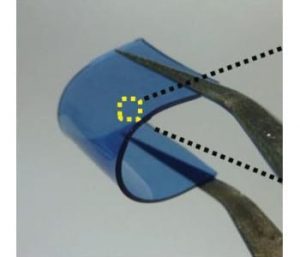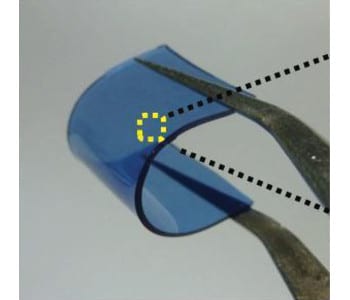 Exceptional challenges have confronted the rational design of colorimetric sensors for saturated aliphatic hydrocarbons (SAHCs). The main reasons for this are the extremely nonpolar nature of these targets and their lack of functional groups that can interact with probes.
Exceptional challenges have confronted the rational design of colorimetric sensors for saturated aliphatic hydrocarbons (SAHCs). The main reasons for this are the extremely nonpolar nature of these targets and their lack of functional groups that can interact with probes.
By taking advantage of a mechanochromic-conjugated polydiacetylene (PDA) and the hydrocarbon induced swelling properties of polydimethylsiloxane (PDMS), J.-M. Kim and co-workers from Hanyang University have developed a sensor film that enables colorimetric differentiation among SAHCs. Their PDA-PDMS composite sensor undergoes a blue-to-red colorimetric transition that is dependent on the chain length of the hydrocarbon target.In addition, the development of the red color is directly proportional to the swelling ratio of the film.
This approach enables naked eye differentiation between n-pentane and n-heptane. Furthermore, the versatility of the sensor system is demonstrated by using it for the colorimetric determination of kerosene in adulterated diesel oil.

















